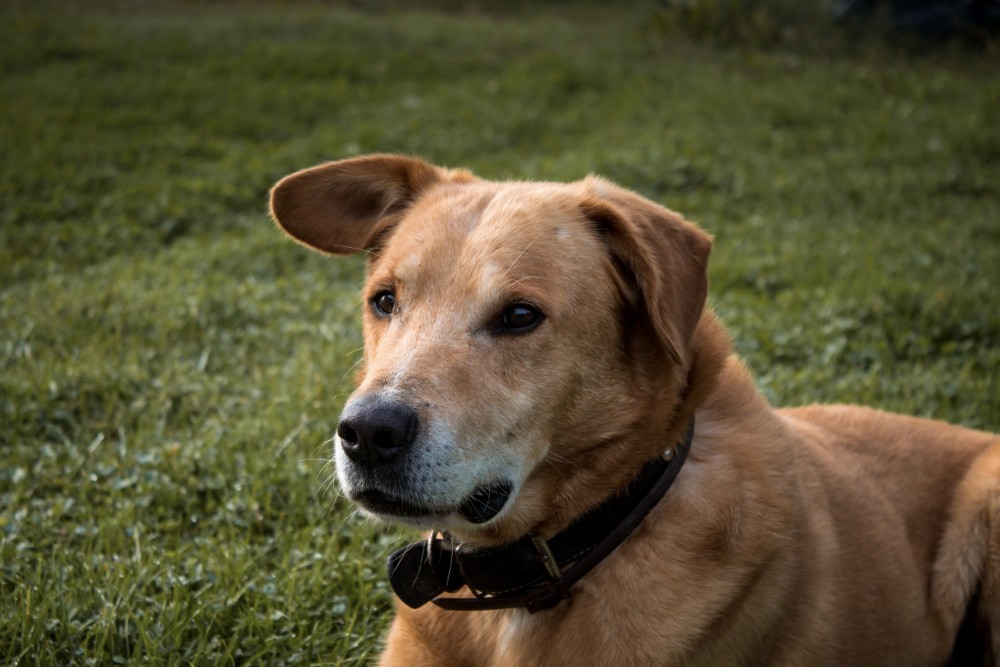For many new learners, negative reinforcement is one of the more confusing introductory concepts in the field of behavior analysis and applied animal behavior. Yet it’s a process at work in all of our behavior and one that is essentially involved in so much pet behavior as well.
Negative reinforcement is defined as the behavior-environment contingency (or dependent relationship) in which a response produces the removal, reduction, or postponement of a stimulus and this in turn causes the response to be maintained or to increase in frequency across time. When I have a headache and I take aspirin, the headache is reduced in intensity or eliminated altogether. Because of this, I am likely to take aspirin again when I have a headache in the future – my response of taking aspirin was negatively reinforced. When my 3 year old son is pulling my 1 year old daughter’s hair, she screams and he lets go of her. She is more likely to scream again under similar situations in the future – her response of screaming was negatively reinforced. Time and again, when we see a police car on the side of the road we immediately slow down until the police car is out of sight – our response of hitting the brakes is negatively reinforced (assuming we do it in time to avoid a ticket!)
When I am teaching students about this concept, I encourage them to associate the words “escape” and “avoidance” with the concept of negative reinforcement. If a response allows an organism to escape from or avoid a situation, and that response continues to occur over time, then we suspect that negative reinforcement is at work.
In the casual literature of pet behavior and otherwise, I have often encountered the misuse of the term “negative reinforcement.” People most often confuse negative reinforcement with punishment. This is because we colloquially use “negative” to refer to something bad. Yet in his original development of the terms positive reinforcement, negative reinforcement, positive punishment, and negative punishment, B.F. Skinner was referring to the additive and subtractive meanings of positive and negative, not their hedonic value. With positive reinforcement, we ADD a stimulus following a response and that response increases in frequency over time. With negative reinforcement, we SUBTRACT a stimulus (remove it) following a response, and the response increases over time. Now, in order for the removal of a stimulus to function as a reinforcer, we might assume that the stimulus is aversive to the organism. The same stimulus whose removal might reinforce a response can be presumed to punish a response on which its presentation is dependent. Whew – easily confusing, right?!
But if we try to keep it simple in reminding ourselves that behavior that allows an animal to escape from or avoid an aversive situation is typically negatively reinforced, maybe we can make it clearer for ourselves.
Let’s take some pet behavior examples. I will speak in this post to body handling issues and come back to other negative reinforcement topics in a future post.
One of the most common canine and feline behavior problems I am called in to address is aggression directed toward owners, veterinarians, or others who attempt to carry out body handling routines. The owner may complain that he cannot clip his dog’s nails without being bitten or that his cat cannot be handled without sedation at the veterinarian’s office. I have worked with dogs and cats who become aggressive when owners attempt to brush them, bathe them, put collars or harnesses on, clean ears, check teeth, remove ticks, and myriad other body touching routines. Many of these manipulations are a necessary part of life with a pet; in fact, many are necessary for the pet’s well-being. Yet the owner’s attempt to do these things is met with growling, snarling, scratching, snapping, or biting.
Let’s examine how this aggression develops in terms of negative reinforcement. Many of these handling routines are fairly benign and involve no physical pain to the animal yet they may be slightly uncomfortable or off-putting. For example, a dog might find the slippery bathtub frightening or the shampoo scent overwhelming. He may find the paw-holding of nail clipping to be overly restrictive or the clipping itself to be momentarily bothersome. If he tolerates it, owners usually pay little attention and continue on with the routine. For some dogs, this is the end of the story. They might “look sad” or act submissively with limp body language and turned away eyes for all their days of body handling. Many owners merrily continue on, ignoring this response. Although not ideal from the dog’s perspective, such circumstances do not typically push owners to seek assistance.
If a dog at any point samples a response like a growl as a defensive tactic in this situation, the owner’s first response is often to back away in surprise. This immediate cessation of nail-clipping or backing away from the bathtub will negatively reinforce the growl. It’s as if the dog has now realized, “Ah, so when I don’t like something or am made afraid by something, I can growl and it makes the thing stop!” This is a highly adaptive response from the animal’s perspective. If the owner packs away the clippers or scoops the dog out of the bath, we might suspect that a growl is already more likely to occur the next time the dog is in this situation. If we in fact see this pattern develop, then we are witnessing negative reinforcement in action.
Knowing that negative reinforcement played a role in shaping this behavior, how do we address it? One option is to use escape extinction – this would involve barreling through the procedure, getting out the wild-animal handling gloves or restraint equipment, and refusing to quit no matter what response the animal throws at us. Such an intervention may be necessary in dire circumstances where the pet’s life is in danger unless handling can occur immediately (e.g., an injured dog is in the street and must be scooped up even while attempting to bite the handler). Thankfully escape extinction is not typically required for any routine handling procedures. This is advantageous because the strategy is stressful for the person and the animal involved and can be highly dangerous.
Escape extinction has sometimes been recommended by animal trainers and others who conceptualize that a dog, for example, must be taught through physical coercion and restraint to tolerate grooming and other handling routines. These recommendations often come couched in terms of the need for physical and social domination of the animal, and escape extinction has been justified under such conceptualizations. Although complete physical suppression of an animal may allow one to complete a routine and may even extinguish its aggressive behavior, such routines are unsafe for most pet owners to implement, very stressful for the pet, and easily make situations much worse if, for example, the animal breaks free and bites the handler or if escape extinction is incomplete. Moreover, escape extinction provides no reinforced alternative response for the animal to engage in and simple response suppression is rarely the goal of a well-designed behavior plan. Although a complete discussion of this particular topic is beyond the scope of this post, suffice it to say that escape extinction is not recommended for addressing aggression in pet dogs or cats.
Our much better option in almost every case is to change the avoidance response in the first place. If we can teach the animal that the routine is not one to be avoided but instead is one to be actively enjoyed, then we remove the motivation (the establishing operation, in behavioral parlance) for the escape in the first place. In our example above, by teaching the animal that nail clipping is associated with treats or that baths are associated with deep body massage, we can make the situation more appealing to the animal in the first place, thus negating its need to rely on aggression as an escape response.
In addition to using positive reinforcement to work our way through these situations, we also use the shaping of tolerance. This means that we begin with small steps toward our desired response, rewarding calm tolerance along the way with the delivery of positive reinforcers and even with escape from the situation itself. For example, instead of throwing a dog in for a full shampoo bath, we begin by teaching him that if he stands on a towel (avoiding slippery surfaces altogether), with water just on his paws, he gets deep body massage for a few moments from a loved one, and then is merrily let out of the bath. That was easy, right? And with some treats to nibble on while he is in there, we can increase the positive stimuli associated with the experience altogether.
With nail clipping, we might begin by teaching the dog that presentation of the nail clippers is paired with treat, then nail clippers contacting paws, then nail clippers contacting nails, etc. At each stage of the game, we are looking especially for calm, relaxed facial expressions and body language to reinforce with food. The food presentation thus can serve an operant conditioning function here (reinforcing the calm behavior upon which it is dependent, if we are waiting for calm behavior to present food) and also a classical conditioning function (pairing food delivery in time with the presentation of stimuli associated with bath time or nail clipping time).
Shaping tolerance and reinforcing calm behavior while providing classical conditioning involving the association of food or other reinforcing stimuli with body handling routines is also important in the veterinary clinic, as this is where many of these routines must take place. Sophia Yin, DVM provided a thorough plan of action for animal hospital staff to follow in improving the experiences of their canine and feline patients through the use of these processes in her 2009 book Low Stress Handling, Restraint and Behavior Modification of Dogs and Cats. This book, complete with detailed pictures taking readers every step of the way through these processes, should be a standard in any veterinarian’s or pet behavior professional’s library.
So when I sit down to work with a client whose dog or cat is engaging in aggression to escape from or avoid body handling routines, I have the owner get out her bag of treats, a dollop of patience, and her understanding of how negative reinforcement works. Then we sit down together to teach this avoidant critter how to enjoy the process instead. It turns out Mary Poppins had it right all along – a spoonful of sugar – or liver treats – really does help the medicine go down!







